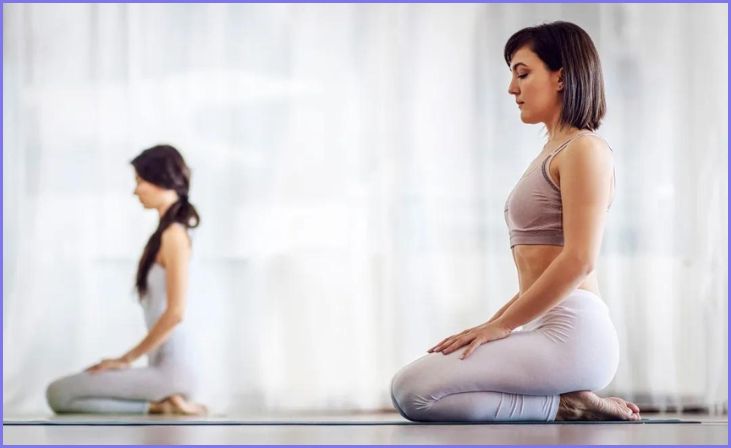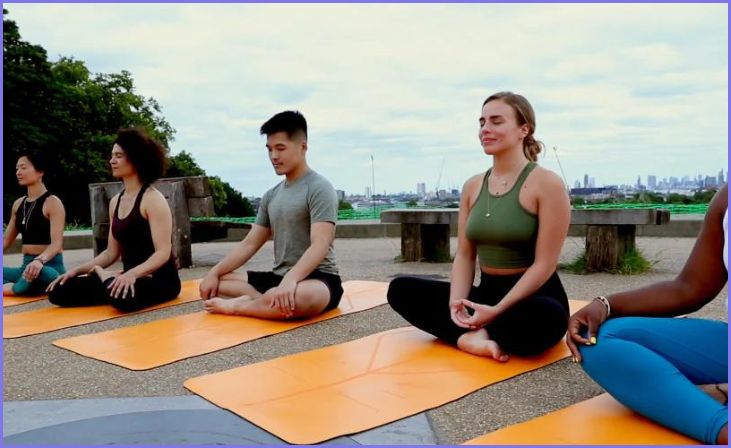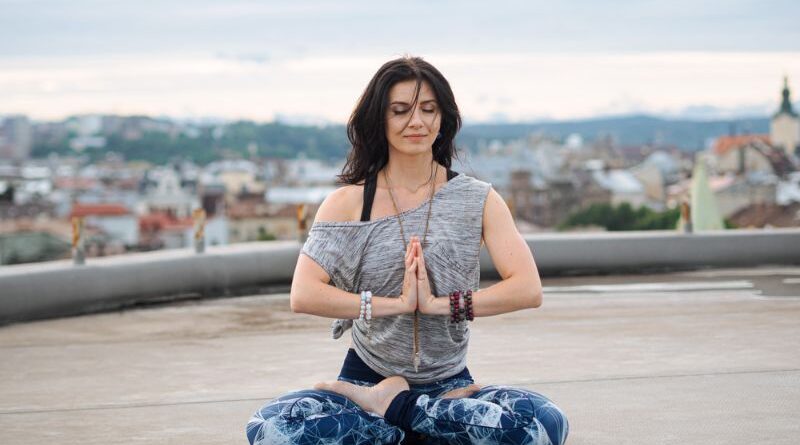Embark on a journey of holistic well-being as we delve into the profound advantages of yoga. In today’s fast-paced world, incorporating yoga into your routine is more than just a trend; it’s a lifestyle. From enhancing flexibility and relieving stress to fostering mental clarity and boosting immunity, the benefits are diverse and impactful.
Join us as we explore the top 10 benefits of yoga, unlocking the secrets to a healthier, happier you. Whether you’re a seasoned yogi or a novice, this guide promises insights that transcend the physical, fostering a harmonious balance between mind, body, and spirit.
10 Benefits Of Yoga
Physical Fitness

Yoga’s holistic approach to physical fitness extends beyond the conventional focus on strength alone. The combination of strength, flexibility, and balance in yoga creates a comprehensive workout for the body. Asanas target diverse muscle groups, fostering muscle tone and endurance. Additionally, yoga promotes joint health by encouraging controlled movements, thereby enhancing overall physical well-being. Regular practice not only improves posture but also raises body awareness, reducing the risk of injuries and elevating overall physical performance.
Stress Reduction
The stress-alleviating benefits of yoga are profound. Through the integration of breath control and mindfulness techniques like meditation, yoga activates the body’s relaxation response. This leads to a reduction in stress levels and the lowering of cortisol, the stress hormone, resulting in a calmer and more composed state of mind. Integrating yoga into a daily routine equips individuals with effective tools for managing stress in various aspects of daily life, contributing to improved mental health and resilience.
Also Read: Exercises For Knee Pain Relief
Mental Clarity and Focus

Yoga’s impact on mental clarity and focus is a result of its unique combination of physical postures and mindfulness. The practice encourages individuals to be fully present in the moment, promoting heightened concentration and awareness. Regular meditation, a core component of yoga, has been scientifically proven to enhance cognitive function, memory, and attention span. The mental clarity cultivated on the mat extends into daily life, positively influencing professional and personal endeavors.
Improved Breathing Patterns
Conscious breathing, or pranayama, is a cornerstone of yoga that goes beyond physical postures. This practice enhances respiratory function, improving lung capacity and the oxygenation of the body. Deep, controlled breathing techniques not only contribute to overall lung health but also serve as effective tools for managing stress and anxiety. The synchronization of breath and movement in yoga enhances the efficiency of the respiratory system, promoting a sense of calm and well-being.
Enhanced Flexibility
Yoga’s dynamic and static stretches contribute significantly to increased flexibility. Regular practice gradually releases tension in tight muscles and enhances joint mobility. This newfound flexibility not only improves the effectiveness of yoga postures but also translates into improved daily movements and a reduced risk of injuries. This increased range of motion becomes particularly beneficial as the body ages, promoting overall mobility and functional fitness.
Balanced Energy Levels

Yoga’s focus on balancing the body’s energy systems has profound effects on vitality and well-being. Various yoga poses stimulate different energy centers, or chakras, fostering a harmonious flow of energy throughout the body. This balanced energy distribution contributes to sustained energy levels, reducing feelings of fatigue and promoting an overall sense of well-being. The holistic nature of yoga’s energy-balancing effects extends to mental and emotional states, creating a comprehensive sense of vitality.
Also Read: SARMs Stacks for Muscle Building
Mind-Body Connection
The integration of the mind and body is a fundamental principle of yoga. Through mindful movement and breath awareness, practitioners develop a heightened sense of self-awareness. This mind-body connection not only enhances the yoga practice itself but also extends into daily life, fostering a more conscious and intentional way of living. The increased awareness of physical sensations, thoughts, and emotions contributes to a deeper understanding of oneself and the ability to navigate life’s challenges with mindfulness.
Improved Posture

Yoga’s impact on posture goes beyond the physical benefits of alignment and engagement. Many yoga poses require proper alignment and activation of core muscles, leading to improved posture. The awareness developed during yoga sessions carries over into daily activities, assisting individuals in maintaining a more upright and balanced posture. Correcting and sustaining good posture not only prevent back and neck pain but also positively impact overall spinal health, contributing to long-term well-being.
Enhanced Circulation
The combination of movement and breath in yoga promotes optimal blood circulation throughout the body. This enhanced circulation facilitates the efficient delivery of oxygen and nutrients to various organs and tissues, supporting overall cardiovascular health. Improved blood flow also aids in the removal of waste products from the body, contributing to detoxification and maintaining a healthier circulatory system. The cardiovascular benefits of yoga extend beyond the physical, positively influencing heart health and overall well-being.
Also Read: Bicep Exercises for Men
Community and Social Connection

Participating in group yoga classes adds a social dimension to the practice, fostering a sense of community and connection. Sharing the yoga journey with others creates a supportive environment that enhances motivation and commitment to regular practice. The sense of belonging to a community of like-minded individuals has positive effects on mental well-being, providing a valuable support system outside of the yoga studio. The shared experience of growth and self-discovery in a communal setting adds an enriching element to the practice, promoting both individual and collective well-being.
Conclusion
In the tapestry of self-care, yoga emerges as a vibrant thread, weaving together physical vitality and inner serenity. The journey to reaping the top 10 benefits of yoga is a personal odyssey, offering not just improved health but a profound connection with oneself. Embrace the mat, breathe deeply, and let the transformative power of yoga illuminate your path to a more balanced and fulfilling life. Namaste.
FAQs
Absolutely! Yoga is adaptable and inclusive, suitable for individuals of all ages and fitness backgrounds. Beginners can start with basic poses, gradually progressing at their own pace.
Consistency is key. Even practicing yoga a few times a week can yield positive results. Aim for at least 30 minutes per session to enjoy the physical, mental, and emotional perks.






